Photon-pair generation
- QuOptLab
- Jul 11, 2022
- 2 min read
Updated: Jul 20, 2022

The correlated-photon-pairs are the most fundamental resource for implementing quantum technology such as the quantum-key-distribution (QKD) and quantum simulation.
Recently, we have measured the correlated-photon-pairs generated by SPDC (Spontaneous Parametric Down-Conversion) with a PPLN-WG (Periodically Poled Lithium Niobate waveguide). The experimental setup is shown in Fig.1.
A 785 nm CW pump laser injects into PPLN-WG and further creates the telecom C-band (1570 nm) photon pairs named signal and idler. The SPDC is designed as a type-II phase matching which makes signal and idler have an orthogonal polarization. Thus, the setup could use PBS to separate two photons easily. To characterize the generated photon pairs, both photons are detected by a single photon counting module (SPCM), respectively, and record the timing of detection of photons. The timing information is sent to a coincidence counter for analyzing the time correlation of both photons and reconstructing the Glauber correlation function G(2) to describe the wave package of photon pairs.

Fig.2 is the Glauber correlation function of the photon pairs we measured. We can see that two-photon has a clear time correlation based on the concentrated timing distribution between their difference in arrival times. To show its quantum nature, we introduce the nonclassical correlation (normalized cross-correlation function), g(2). In the classical case, the thermal state has the highest g(2) of 2 since its photon-bunching nature. However, the correlated photon pairs have a strong time correlation and make it could beyond this classical limit of 2.
In Fig.3, we measure the normalized cross-correlation function as a function of pump power. Since high pump power might generate too many photon pairs within a detection time window and result in accidental counting. Therefore, we can see the decrease of g(2) at high power regime. In contrast to the low pump power case, a single pair of photon is generated purely, and therefore we can get a high nonclassical correlation that strongly violates the classical limit of 2.

Based on the above results, we can further use this source to build such as polarization-entangled source, time-frequency entangled source, and even demonstrate a QKD system.
We are thankful to Prof. Chen, Yen-Hung (Department of Optics and Photonics, NCU) for providing the PPLN-WG and some crucial instruments such as SPCM and counter to let us complete our experimental setup.




Comments